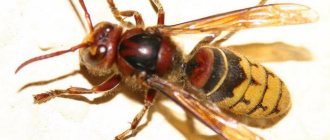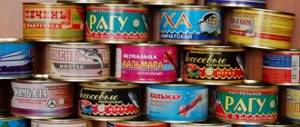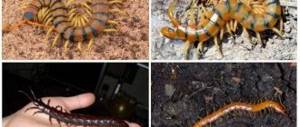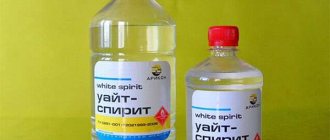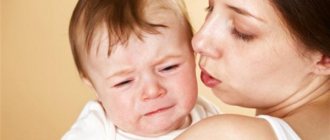It is difficult to find a person who has not experienced a bee sting in his life. Unpleasant burning sensations, pain, unbearable itching and swelling are manifestations of the poison that is introduced at the moment of the insect bite at the tip of the sting. A bee attack that results in a sting is usually fatal to the enraged bee. During the attack, the female drives the sting so tightly into the human skin that she is unable to remove it back. As a result, it comes off, and along with it a significant part of the insect’s intestine, which leads the individual to inevitable death. In this way, females protect themselves and their nests in times of danger. However, along with the pain and frustration, a bee sting comes with enormous health benefits. It is how treatment with bee stings is used in medicine that will be discussed in this article.
Brief description of bees
In nature, there are several species of stinging insects with membranous wings. All of them bite their prey with a sharp sting, which is a modified ovipositor. Of all the membranous bees, only the bee leaves it along with part of the abdomen after being bitten in the wound. A few minutes later the insect dies from the resulting injury. Other stinging insects bite repeatedly without harming themselves. Bee venom is slightly weaker than the toxins of other membranous bees. But for some people, even a single bite causes dangerous complications.
The bee leaves its sting in the wound of the victim. It continues to release poison and poison a person. Therefore, it must be removed immediately after the bite. Domestic bees living in the apiary rarely attack humans. Their attacks do not cause severe pain or swelling. A wild bee sting is more dangerous. But even these insects do not attack without reason. Stings, as weapons of defense, are present only in working individuals that collect pollen from flowers. Male drones do not have them.
Folk recipes
Traditional medicine also has recommendations regarding first aid for a person stung by a wild or domestic bee. The recipes described below are most effective when used in the first seconds after an insect attack.
So, if a conflict with bees occurred in nature, then a compress of:
• dandelion juice; • paste from plantain leaves, chamomile flowers, sage.
In the absence of the above-mentioned plants, human urine will do. This procedure should not cause disgust, since urine, firstly, is sterile, and secondly, it contains substances that have a pronounced antiseptic and anti-inflammatory effect. It is better to use it as a compress.
When traveling in a car, any car enthusiast takes a first aid kit. It will probably contain:
• acetylsalicylic acid; • Activated carbon.
Both drugs will help get rid of unpleasant sensations at the site of the bite. The procedure is as follows:
• crush the coal tablet and mix with a drop of water; • apply the paste to the wound after removing the sting; • dissolve aspirin and moisten a cotton swab; • cover the black mass with it and bandage it.
Coal will draw out the poison from the wound, and acetylsalicylic acid will have an anesthetic effect. Remove the lotion after an hour. Wash the wound with clean water and soap.
Bee attacks in the countryside happen quite often. Here, in the absence of other means, ordinary parsley will help you.
You need to do this:
• remove the sting; • wash the bite with soapy water; • grind a bunch of parsley with soda; • apply to swelling; • tie with a plastic bag.
Vegetable oil reduces pain and relieves inflammation (both olive and sunflower are suitable). The bite site should be wiped with a swab soaked in it several times, and the discomfort will disappear in a couple of minutes.
Regular onions are also useful, because they literally contain an abyss of biologically active substances, and their concentration is quite high. Therefore, the toxins present in bee venom are quickly bound and neutralized. At the same time, onion juice disinfects, which means that the risk of infection of the wound disappears.
It is recommended to grate the vegetable and use the pulp as a lotion. You can also simply apply half a turnip to the bite. In any case, the inflammation soon subsides and the pain subsides.
Aloe juice also has a lot of beneficial properties. They treat all kinds of injuries, abscesses, burns and scratches. The healing liquid is extracted from the pulp contained in the fleshy leaves of the plant. The raw materials must be finely chopped and wrapped in gauze, squeezed out. The juice is later used for lotions.
In addition, a compress can be made from a whole leaf - it is cut lengthwise and the pulp is applied to the bite.
The danger of bee stings
If an adult healthy person is stung by a bee once, there are no serious complications. Lethal outcome is possible only after 250 simultaneous bites. But some victims successfully survive being stung by up to 300 insects. Sometimes even a single bee attack causes death. The risk group includes children, people prone to allergic reactions or with weak immunity.
Dermatological problems are dangerous consequences of insect attacks. Some people develop an allergic reaction to a bee sting, such as severe itching, rashes, swelling or redness. They do not last long and go away quickly with proper therapy. Inflammation of the lymph nodes is especially dangerous.
Symptoms of bites
After an attack by stinging insects, signs of damage vary. The most severe symptoms of allergy to bee stings are observed in young children and adults prone to allergies. Adults with strong immunity easily tolerate the effects of apitoxin. They develop the following symptoms:
- redness and swelling of the affected skin area;
- itching in the affected area;
- burning sensation from bee venom entering the wound for 24 hours;
- a bee sting can cause a fever;
- formation of a seal in the affected area.
If you are intolerant to apitoxin, swelling quickly develops after a bee sting and lasts a long time. Symptoms increase especially quickly against the background of existing allergies. The victim develops swelling after a bee sting. He loses the ability to breathe on his own due to bronchospasm. Additionally, the following symptoms develop:
- tachycardia;
- urticaria, redness of the epidermis;
- nausea with vomiting;
- sudden, rapid change in blood pressure;
- dyspnea;
- heaviness in the heart area;
- convulsions;
- fainting.
Apitoxin has a particularly dangerous effect on the body if the attack of a stinging insect hits the face or neck. On the sensitive soft tissues of the face, swelling spreads very quickly. From exposure to the poison, some people experience a rise in body temperature and a headache. If you are intolerant to bee products, the likelihood of death increases several times. Symptoms persist for the first three days after the bite. To speed up recovery, the wound is washed and treated with an antiseptic.
The use of healing qualities in medical practice
Oncologists claim that mellitin, as a component of the bee venom molecule, destroys the body's cells with minimal toxicity in comparison with other drugs known to medicine. Therefore, treating cancer with apitoxin is effective; a bee sting slows down the growth of malignant cells and formations.
Histamine is another component of the poison. In the cardiological field, there is no more effective natural remedy in the fight against atherosclerosis and hypertension. It dilates blood vessels and reduces cholesterol levels in the blood. Hypertensive patients are guaranteed recovery.
Thanks to peptides and gerutin, blood clots dissolve, blood viscosity decreases, the level of blood supply to the extremities increases, pain and swelling in the legs disappears even after a long walk. Beekeeping products are successfully used by phlebologists in the treatment of varicose veins, allowing them to achieve positive dynamics without surgical intervention.
Neurologists also successfully use apitherapy for diseases of the nervous system. Acupuncture methods provide stable remission for osteochondrosis and neuralgia, thanks to the antispasmodic effects of the components of the poison. Self-medication is not recommended in order to avoid harmful consequences, since a positive result is possible only if the insect bite hits the required point on the patient’s body.
According to rheumatologists, the poison, acting on the nervous system, helps to heal even advanced forms of rheumatism.
Preparations containing bee venom effectively treat eye inflammation. This is how ophthalmologists cope with keratitis, conjunctivitis, iritis, iridocyclitis, etc., using eye drops based on a bee product.
It is popular to use physiotherapeutic treatment for psoriasis. Electrophoresis with bee secretions on various zones and systems of the body provides a regenerating effect on diseased skin, successfully treats not only psoriasis and its manifestations, but also other dermatological problems, and even eliminates traces of scars and scars.
Beekeeping products can not only cause exacerbations in allergy sufferers, but with the help of poison they can overcome bronchial asthma. The peculiarity of the application is the use of regular minimum daily doses, which are administered to the patient in the chest area. Thanks to this method, bronchospasm can be minimized.
What to do if you are allergic to a bee sting
Treatment at home begins immediately, without waiting for a visit to the doctor. Usually an insect attack occurs at the wrong time. Sometimes there is no person nearby who can provide first aid correctly. Therefore, it is necessary to remain calm. If all actions are performed correctly, it is possible to avoid serious complications and improve well-being before the arrival of doctors.
First aid for bee stings
Before removing the swelling, the remaining sting is removed from the wound. This will prevent further poison from entering the body. It is pulled out with tweezers, pre-treated with medical alcohol or other liquid containing alcohol. If a suitable tool is not available, remove the sting with your fingers after washing your hands. The work is carried out carefully to protect the victim from secondary infection.
Important!
The wound should be treated with medical alcohol, a pinkish solution of potassium permanganate or hydrogen peroxide. Disinfection helps relieve swelling from a bee sting. A cold compress is then applied to the affected area. It helps reduce pain.
To prevent the spread of poison and replenish fluid deficiency in the body, the victim is offered sweet tea and still mineral water. If a bee bites a person prone to allergies, he is given an antihistamine. Choose a medicine that matches the type of disease. If an allergy develops very quickly, the first thing to do at home is to call an ambulance or transport the victim to the hospital yourself. Before doctors arrive, blood pressure is reduced by applying warm heating pads to the body. Also, to improve well-being, they give medications “Diphenhydramine” or “Cardiomin”.
Treatment of the wound
A bee sting begins to be treated immediately after first aid is provided. To do this, relieve pain, stop the spread of tumor and redness. Additionally protect the wound from infection. To quickly restore damaged tissue, it is necessary to relieve swelling and itching after a bee sting.
For treatment, use Fenistil gel or Psilo balm. These drugs act in a complex manner. They reduce the likelihood of developing allergies. Also, this ointment helps after a bee sting to reduce swelling and the spread of redness. The damaged area stops itching and hurting after applying the drug.
Dangerous situations
The most severe consequences occur when a bee stings in the face. The eyelid swells greatly from an insect bite. Redness, profuse lacrimation and severe pain develop. The affected eye may become inflamed. Folk remedies for the treatment of bee stings in the eyelid area are not recommended. Only washing the eyes with strong black tea is allowed. The product relieves redness and inflammation and accelerates healing. To get rid of swelling in the eyelid area and speed up healing, you need to:
- Apply an antihistamine drug into the eyes. The products “Allergodil”, “Okumetil”, “Octilia” are suitable for this.
- To quickly reduce swelling, drops with the steroid Dexamethasone are used.
- Apply an antiallergic ointment to your eyelids to relieve itching from a bee sting.
- Take an antihistamine orally, for example Suprastin.
If a child is bitten by bees, an acute allergy rarely develops, but usually the site of the bite is very itchy and painful. The situation is complicated by the unpredictable reaction of the child’s body to insect venom. To provide first aid to a baby, perform the following steps:
- the child is calmed down, placed on the bed in a horizontal position or seated;
- do not allow the baby to touch the wound to make it easier to remove the sting;
- Gently lubricate the affected area with a disinfectant;
- pull out the sting, trying not to hurt the child;
- treat the wound according to general rules;
- apply a sterile bandage;
- the child is given a medicine that prevents the development of an allergic reaction;
- constantly monitor the baby’s condition;
- give you water or warm tea to drink.
Important!
If the child’s bite symptoms intensify, the pain does not subside, and the body temperature rises, seek medical help. Signs of poisoning after a bite are also a reason to call a doctor. If first aid is provided on time, all discomfort after an insect bite goes away within 24 hours.
Indications for use of the toxin
The properties of bee venom are used to treat diseases of the cardiovascular, musculoskeletal, and nervous systems:
- the ability to lower cholesterol is used in generalized arterial diseases - atherosclerosis and obliterating endarteritis
- anticoagulating effect is used for varicose veins;
- the vasodilating effect of bee toxin is used for hypertensive conditions;
- treatment of osteochondrosis, rheumatoid arthritis and other systemic diseases is based on the anti-inflammatory and analgesic effect of bee toxin; therapy for osteochondrosis with bee stings is the most popular technique;
- the composition of bee venom has a beneficial effect on “male” and “female” diseases - prostatitis, menstrual irregularities, infertility;
- When using the toxin, positive dynamics are observed in such serious diseases as cerebral palsy, parkinsonism, and multiple sclerosis.
How to cure the consequences of a bee sting
The body's reaction to toxic substances depends on the person's sensitivity to the poison. With strong immunity, the consequences are limited to swelling and redness. If a person is weakened and prone to allergic reactions, more serious complications are possible, including anaphylactic shock. The consequences of a bite are unpredictable and therefore dangerous.
Edema
To relieve swelling and prevent tumor formation, the wound is treated with a disinfectant. A cold compress is applied to the affected area. It reduces swelling or eliminates it completely. As an antidote, the victim is given antihistamines in tablets or given an injection. It is also possible to lubricate the affected area with an ointment with a similar effect.
Prevention of bee stings
Stinging insects never attack without reason. Usually the person himself acts in a threatening manner. Therefore, the bees attack to protect their hives and queen. An attack on a person is fatal to the insect itself. Therefore, to avoid being stung, it is enough to behave calmly around bees, without making sudden movements or waving your arms. Outdoors, food must be consumed with caution. Sweets and fruits are especially attractive to bees. Therefore, you need to be careful while eating.
Important!
When going outdoors, you don’t need to wear bright clothes. Calm, neutral colors that do not attract the attention of insects are preferred. You can protect yourself from possible bites by wearing long sleeves and pants. A hat is also required. During the flowering period of plants, you need to wear closed shoes to go out into nature.
Bees are provoked by strong aromas. In order not to attract the attention of insects, you should give up perfume and avoid drinking alcohol. When visiting an apiary, you do not need to brush away insects with your hands. Bees perceive sudden movements as an attack and defend themselves in response. Unnecessarily, you should not approach the hives closer than 3 m. For protection, you can use an insect repellent.
The body's reaction after a bee attack is always individual. It depends on the age and health status of the victim. Severe consequences in the form of a severe allergic reaction rarely occur. Usually all discomfort goes away within 1-2 days. For preventive purposes, when going outdoors in the summer, follow safety rules and use insect repellents.
Causes of aggressive behavior
Do not confuse wasp and bee stings. While a wasp can bite many times, a bee can only bite once, after which it dies. The likelihood of suffering from a bite from this insect increases significantly in the following cases:
- Finding hives nearby. Beginner beekeepers must wear a special mask, long clothing, and gloves.
- Pungent smell of cologne, sweets, alcohol. If you are going to relax outside the city, you should not wear perfume.
Bees may perceive the strong smell of toilet water or perfume as a threat, which is why they may attack - Pumping out honey. If one of your neighbors takes honey from the bees, it is better to stay home at this time, as the bees become especially aggressive.
- Incorrect behavior near an insect. You cannot wave your arms, shout, or try to kill a bee. It is best to simply “freeze” in place, covering your head with something, or slowly move away. Under no circumstances should you run away, as this will make the honey miner more aggressive.
- Walking barefoot. If there is an apiary nearby, it is better not to take risks and walk in shoes. Damaged individuals cannot fly, they only crawl on the ground, so you can accidentally step on one of them with your foot.
